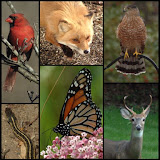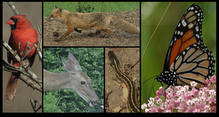Red-Bellied Woodpecker Enjoying the Maple Sap
 I believe that the sap is beginning to run on the maple trees. A good indicator is that the red-bellied woodpecker was observed pecking the maple tree bark. With a little luck in the next view weeks, we'll observe the yellow-bellied sapsucker, which has only been observed during February in the Colvin Run Habitat.
I believe that the sap is beginning to run on the maple trees. A good indicator is that the red-bellied woodpecker was observed pecking the maple tree bark. With a little luck in the next view weeks, we'll observe the yellow-bellied sapsucker, which has only been observed during February in the Colvin Run Habitat. This second photo shows the red-bellied woodpecker beginning his flight from a position of clutching the bark.
This second photo shows the red-bellied woodpecker beginning his flight from a position of clutching the bark.





